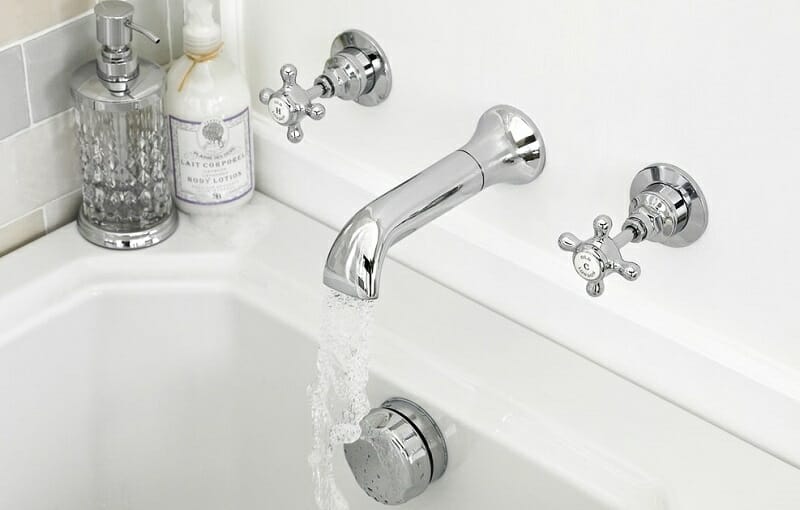What Are The Different Types Of Shower Taps?
There are a few different types of shower taps available on the market today, each with its own unique features and benefits.
Traditional Hoses:
These taps use traditional hoses to deliver water from the faucet to the receptor unit. They are typically cheaper than other types of showers since they don't require any extra hardware or installation.
Receptacle Shower Taps:
This type of tap uses a receptacle instead of a hose, which makes it easier to keep your bathroom clean and organized. The downside is that these taps can be more expensive than other options because you need to buy an accessory kit in order for them to work properly.
Overhead Showers:
These showers feature an overhead stream that sprays water onto users at waist height or above. They offer greater coverage than standard showerheads, making them ideal for large areas such as bathrooms or living rooms. Plus, they provide superior spray patterns compared to either conventional or recessed showerheads.
How To Install A Shower Tap?
Shower installations can be a bit daunting, but it's not as difficult as you might think. Follow these steps to get the job done right:
- Remove your old shower head and hose by unscrewing them from the wall - You will need to do this in two places so that you can replace both pieces at once.
- Gather all of the necessary supplies before beginning: hammer, drill, screwdriver, leveler or plumb bob (if needed), wire cutters (if needed), tape measure/circular saw If possible, have someone help hold the structure while you work.
- Begin by drilling a 1-inch hole near the center of your showerhead. Center your new showerhead on top of this hole and tighten the screws into position. Be sure to use washers and bolts with adequate torque - too little torque may cause damage to your newly installed head or pipe fittings!
- Cut excess wire off both ends of your new hoses using wire cutters if necessary - Leaving any extra cable hanging could create future problems when trying to connect hoses together properly.
- Fit one end of each hose onto one side of an elbow connector (or press fitting) and twist until snugly inserted into their respective ports on the opposite side of tubing installers (or press fitting).
Use plumber's putty or silicone sealant where appropriate around connectors for a watertight seal.: Repeat procedure on other end(s)of hoses
How To Choose The Right Shower Tap
There are a lot of different shower taps available on the market these days, and it can be hard to decide which one is right for you. There are many factors to consider, including price, design, and functionality.
Here are some tips to help you choose the perfect shower tap:
-Price isn't always the most important factor when choosing a shower tap. In fact, sometimes less expensive options may be just as good or better than more expensive ones in terms of performance.
-Consider your design preferences. Do you want sleek and modern-looking fixtures or something more traditional? Many popular showers have multiple style options available so you can find something that fits your look and personality perfectly.
-Think about what functions you need the tap to perform. Some common features include water temperature control (especially useful if you have allergies), the ability to hold strong water pressure (which is great for people with arthritis or other mobility issues), and rainfall function (a nice touch if you live in an area where precipitation is common).
Once you've determined what features are essential for your needs, it's time to start shopping! There are hundreds of beautiful shower taps available on all sorts of different brands at all sorts of different prices - so there's definitely something perfect for everyone out there!
Shower Taps For Baseboards And Walls
When it comes to showering, most people prefer baths or showers. But what about those times when you just don't have the time or space for a full bath? Or when you want to save water but also enjoy a hot shower?
Shower taps that attach directly to your baseboard or wall can solve both of these problems. These taps come with flexible joints that allow them to be positioned in any direction, and they are easily adjustable so you can customize the pressure and temperature of your shower exactly how you like it.
Plus, attaching a tap directly to the wall eliminates the need for an extra drain on your floor - which can help conserve precious resources!
How To Change Shower Taps
Changing shower taps can be a relatively easy and affordable task, depending on the type of tap you need to replace. If your current taps are plastic or rubber, then simply unscrew them and remove them from the wall.
If your taps are metal, then you will need to take apart the surround and housing first. Once these have been removed, you can replace them with new tap parts by reversing the process.
FAQs
Can I use a shower tap set on an existing shower pipe?
Yes, a shower tap can be installed on an existing shower pipe.
When Should I replace my shower taps?
Whenever the quality of your shower is not up to standard.
My shower tap isn’t turning on - what should I do?
The most common cause of a shower tap not turning on is a broken or clogged water flow. To fix the problem, you will need to remove the shower head and clean any blockage with a plunger or snake. Make sure all debris has been removed before reattaching the head - otherwise, it may happen again.

